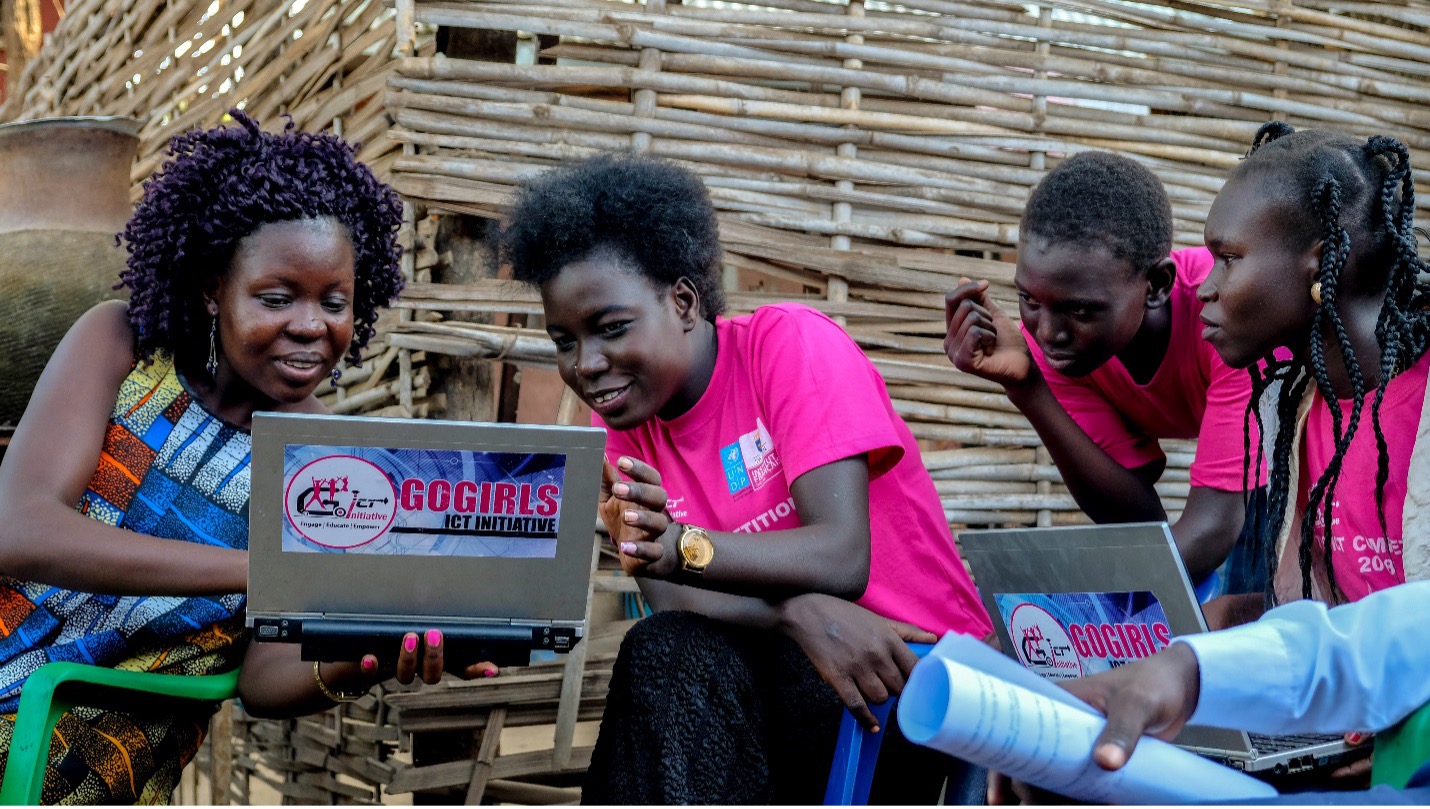Girls redrawing the future of AI
May 10, 2023

A few days ago we celebrated the Girls in ICT Day and I am wondering how can we keep moving the digital equality needle so that more women out of the 259 million that are disconnected today can log in and become creators and not only beneficiaries in the digital economy?
Digital technologies have permeated virtually every essential aspect of our lives. From the news we hear first thing in the morning, to school homework and connecting with our friends and family.
In just a matter of days after its launch Chat GPT had more than one million visitors and now is attracting close to 100 million users monthly. A few weeks ago, a group of industry leaders wrote an open letter to put a temporary halt to AI development for at least six months. They argue that AI technologies should be deployed under strict regulatory frameworks, be public and verifiable, just as medicines and vaccines are developed and released.
Undoubtedly AI and machine learning are a double edged-sword.
On the one hand, these technologies can help combat climate change. Agronovate in Nigeria designed a smart storage device which keeps fruits and vegetables fresh. In Morocco, Atlan Space is using AI to pilot drones collecting data and conducting surveillance missions to track environmental crimes. While in the Sahel region herders are using AI and satellite data to feed livestock with a pastoral surveillance system.
AI is also fighting the backlash against gender equality.
UNDP is using AI-based algorithms in Uruguay, the Philippines, Uganda and Colombia, to track social media, monitor gender hate speech and send signals to governments and civil society organizations. It’s to protect women’s rights defenders, women politicians and women journalists who are increasingly experiencing cyberbullying and other forms of digital violence including doxing, trolling and flaming.
But AI has also a dark side that can deepen inequalities and cause harm, most notably for women.
Women are increasingly exposed and entrapped by AI that produces deep fakes or digital images and audio that are artificially altered or manipulated by AI and deep learning to make someone do or say something they did not actually do or say. Consequences can be devastating. In early March hundreds of sexual deepfake ads flooded Facebook and Instagram using Emma Watson’s face, a British actor and women’s rights advocate.
It is undeniable that gender biases are reproduced by AI technologies whose algorithms are trained by biased programmers shaped by discriminatory social norms, and this can have adverse results for example when women apply to credits that are awarded with AI-based credit scoring applications, or when they apply to a job that is typically done by men.
For better or for worse AI will shape the future of our world and we have not only to harness its power, but also to make sure we protect the furthest behind from potential adverse effects.
Here are some clues to achieve it.
First, we need robust legislative and regulatory frameworks capable of holding big tech companies accountable.
Second, tech companies need to further commit to addressing hate speech and gendered violence and keeping their platforms safe for everyone. Globally, 38 percent of women – that is close to one in four - have experienced online violence. The statistics are appalling and big tech companies, including Google, Amazon, Apple, Meta and Microsoft, need to be more responsible and accountable.
Third, the design of digital products including AI-based algorithms and the way they are trained must be gender equal by design and be guided by digital ethics principles. Technologies should be designed with users and address privacy and security, ensuring all people, but especially women and gender-based marginalized populations to be protected in digital spaces.
And fourth, we need more diversity in the tech industry. Big technology companies are making slow, but steady progress in increasing women’s participation not only across the career ladder, but also in technical roles. Large global technology firms, on average, reached nearly 33 percent overall female representation in their workforces and 25 percent in technical roles in 2022. Still a long way to go.
Digital innovation can be truly a game changer in our modern world and there’s so much female potential and talent out there to flip the script. Young innovators are already helping to redraw the future of AI with solutions that are addressing today’s most pressing problems. UNDP firmly believes that women tech founders’ tailored support, dedicated acceleration programmes and increased access to capital is needed now more than ever. So we’re supporting thousands of women across the globe with flagship programmes such as the Arab Women Innovators Programme or the BOOST Women Innovators Programme in Europe and Central Asia.
Look at some of the most amazing stories of young women innovators supported by UNDP that are spearheading the field of AI for good.
Samar Hamdy (Egypt), co-founder of DevisionX and developer of Tuba.ai, a platform to label, train data and deploy AI-based applications with zero code; Mariam Torosyan (Armenia), CEO and founder of SafeYou, a mobile application designed to reduce gender-based violence through safety and community functions; Sara Saeed (Pakistan) CEO and co-founder of Sehat Kahani, a telehealth platform that connects a network of predominantly female health professionals to patients using a telemedicine application that allows real time and instant chat/audio/video doctor consultation, e-diagnostics, e-pharmacy, and health counselling; or Salua García (Colombia), co-founder of Symplifica, a tech startup with a mobile app that facilitates the formalization of domestic workers.
Let’s keep supporting girls in ICT, those young innovators that are redrawing the future of AI and bringing digital equality closer.

 Locations
Locations